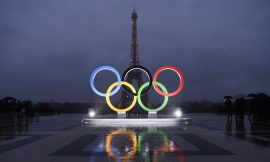The City Hall of Paris tested the reaction of several professions during a simulation on Friday. Eighty people participated in an emergency situation, which was made more challenging with multiple unexpected crises.
On Friday the 13th of October, in a room in the 13th arrondissement, a group of individuals participated in a crisis exercise organized by the City Hall of Paris. They were situated on the ground floor of the sociocultural center of the Maison solidaire. One man was on the phone with the General Secretariat of the Defense and Security Zone, explaining the purpose of his call. Following a breakdown of the RER B train, the City needed to transport a team of 80 healthcare workers from Massy to Porte d’Italie by land. This reinforcement was necessary to assist the residents of the 13th arrondissement, who were suffering from a heatwave. However, despite the scenario described, the temperature outside was only around twenty degrees. This conversation was real, but the scenario was purely fictional.
On this National Resilience Day, the City of Paris organized a crisis exercise called “Paris at 50°C”. It was a large-scale role-playing game that brought together around 150 participants, including residents, schoolchildren, firefighters, paramedics, police officers, and residents of nursing homes. The objective was to anticipate extremely high heatwaves in the capital. The operation took place in two districts of Paris, the 13th and the 19th. “The idea is not to wait for the next heatwave to start working, but to find answers and solutions right now,” explained Pénélope Komitès, Deputy Mayor of Paris in charge of the project. “Because all studies show that these crises will become more and more frequent.”
Good news for the journalists invited to cover the event: the exercise did not involve actually being hot, but rather pretending to be in a heatwave scenario. This scenario was developed by the company Crisotech, which specializes in crisis management. The Parisians were transported to June 2032 and had been experiencing an unprecedented heatwave in terms of intensity for several days, with temperatures reaching 50 degrees. “Experts predict a scenario like this to occur in the second half of the century in Paris,” clarified Pénélope Komitès. “But let’s remember that it already happened in Vancouver in 2021.” A fake television news broadcast and a fictional social network were created to make the experience as realistic as possible.
Faced with this unprecedented episode, the City of Paris decided to open a series of “refuge sites” to shelter residents. This morning, schoolchildren from the 19th arrondissement relocated their classroom to a parking lot. In the afternoon, around fifty students from CM1 and CM2 of the Providence School in the 13th arrondissement were transferred to a tunnel on the Petite Ceinture. “When it’s 45 degrees outside, the temperature in the tunnel is around 20 to 22 degrees,” explained Philippe Billot from the association Espaces, which manages the maintenance of these areas. “And there is also a natural flow of fresh air caused by the temperature difference between the outside and the inside.”
Even though the air was cool, incidents that were previously prepared with the children occurred: around ten students soon complained of nausea and headaches. The number of affected students raised concerns about a possible carbon monoxide poisoning caused by the generator installed in the tunnel. The firefighters intervened with the amused eyes of the young participants. “The purpose of an exercise like this is to anticipate the domino effects of a crisis,” explained Ziad Touat, a crisis management consultant at Crisotech. “That’s why the scenario includes unforeseen events, technical failures, and human issues.”
Other (fictional) events punctuated the narrative: to cope with a widespread power outage caused by the heat, Enedis had to urgently deploy a 800 kVA generator (enough to power approximately 500 people for about two hours). A few meters away, secondary school students transformed the Annie Girardot nursing home’s canteen into a reception area for the most vulnerable (sick individuals, homeless people). “If I experience another heatwave, I’m not sure if I would really seek refuge in a nursing home,” smiled Wali, who came with his class from Georges Braque College. “I would rather go to the swimming pool or shopping center.”
The collective exercise ended in a jovial atmosphere, likely far from what would be fostered by a 50-degree thermostat. The city now has the task of identifying potential climate refuge sites (parkings, shops, tunnels). This mission does not promise to be easy, considering that a tunnel like the Petite Ceinture can only shelter around 80 people, while the capital currently has over 2 million inhabitants.



